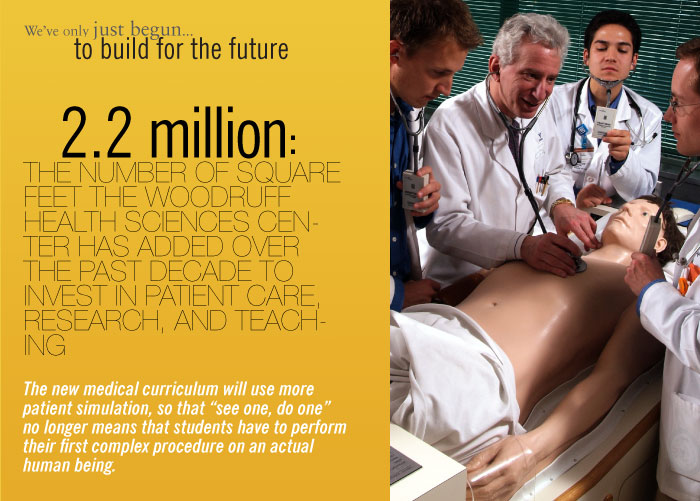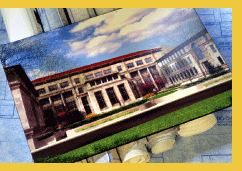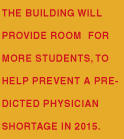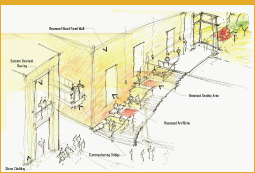
What will this new program look like? There will be less “talking at” students in lectures, more small-group venues for learning based on patient cases. Students will be immersed in clinical experience from day 1, and basic science will be taught more in the context of clinical medicine. Teaching of human anatomy will take advantage of an explosion of sophisticated imaging technologies. The program will use
 more patient simulation, sometimes with highly trained actor-patients, often
with electronic mannequins or virtual reality programs, so that “see
one, do one” no longer means that students have to perform their first
complex procedure on an actual human being.
more patient simulation, sometimes with highly trained actor-patients, often
with electronic mannequins or virtual reality programs, so that “see
one, do one” no longer means that students have to perform their first
complex procedure on an actual human being. “Some things are a moral imperative, and preparing the best doctors in the best way is one of them,” says Thomas Lawley, dean of the medical school. With more than half the funding already in hand for the new building, he is making a compelling case to alumni, former patients, and everyone who wants their children and grandchildren to be treated by the most outstanding physicians possible. Emory’s medical school is the place it can happen, he tells them. With this long-awaited building finally under construction, old barriers are gone, and all possibilities open.
| Next
chapter: to bring knowledge to the bedside>> |
||
|
|
|||||||||||||||||||||||||||||||||||||||||||||||||||||||||||||||
Copyright
© Emory University, 2006. All Rights Reserved
 medicine’s emerging new curriculum. It also will
be a beauty, filled with natural light and the human space that
enhances learning: a soaring atrium, a student commons,
the school’s first-ever lounges where faculty and students
can mingle and munch informally, and an entry plaza green space
with park-like landscaping, outdoor seating, and a central fountain.
The $55 million building also will be the first completely wireless
facility on the Emory campus.
medicine’s emerging new curriculum. It also will
be a beauty, filled with natural light and the human space that
enhances learning: a soaring atrium, a student commons,
the school’s first-ever lounges where faculty and students
can mingle and munch informally, and an entry plaza green space
with park-like landscaping, outdoor seating, and a central fountain.
The $55 million building also will be the first completely wireless
facility on the Emory campus.
